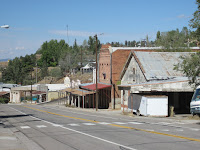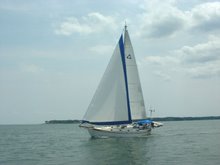Location:
Tempe, Arizona
On our way across the US this summer, Time was pretty well behaved. We'd cross a time zone, gain an hour, make sure the GPS, phone, computer, Kindle, and travel alarm clock were all in agreement, and we'd be set until sometime in the future when we'd go through the exercise again as we continued to move West. It was all very predictable and we were okay with it.
Last month, we left California, crossed through Nevada, into Utah, and entered a different time zone. This time we lost an hour, but no big deal – we figured we owed it after all the gaining we did on the way out here. We willingly made the adjustments to the time on all the electronics.
But when we headed south into Arizona, Time started acting like a petulant toddler at bed time. Arizona doesn't do Daylight Savings Time (DST), so we were suddenly back on California time, 3 hours after Eastern time and 8 hours after English time. But we made the adjustments and carried on.
Then, still in Arizona, we entered the Navajo Nation's “Big Reservation”. The Navajos DO do DST, so we lost an hour again. Once again, we did all the adjustments and got settled in.
Heading North, back into Utah, Time was once again relatively well behaved until we crossed the border back into Arizona. This was followed by more kicking and screaming as we proceeded to cross back and forth between Utah, Arizona, and the Navajo Nation over the next few weeks. By the time we were done, we were thoroughly confused and had decided that, whatever the old Rolling Stones song says, Time is NOT on our side.
Finally, we settled in for a visit with one of Mark's old Copper Hill friends who lives in Tempe, Arizona. Time once again began behaving admirably, remaining the same as California, and 3 hours behind the East Coast.
That is, until this morning when Time pulled a fast one on us. Everyone else in the US reverted to Standard Time last night except Arizona, which was already there. Now, while we know what time it is here, we are, once again, not sure what time it is anywhere else.


































































